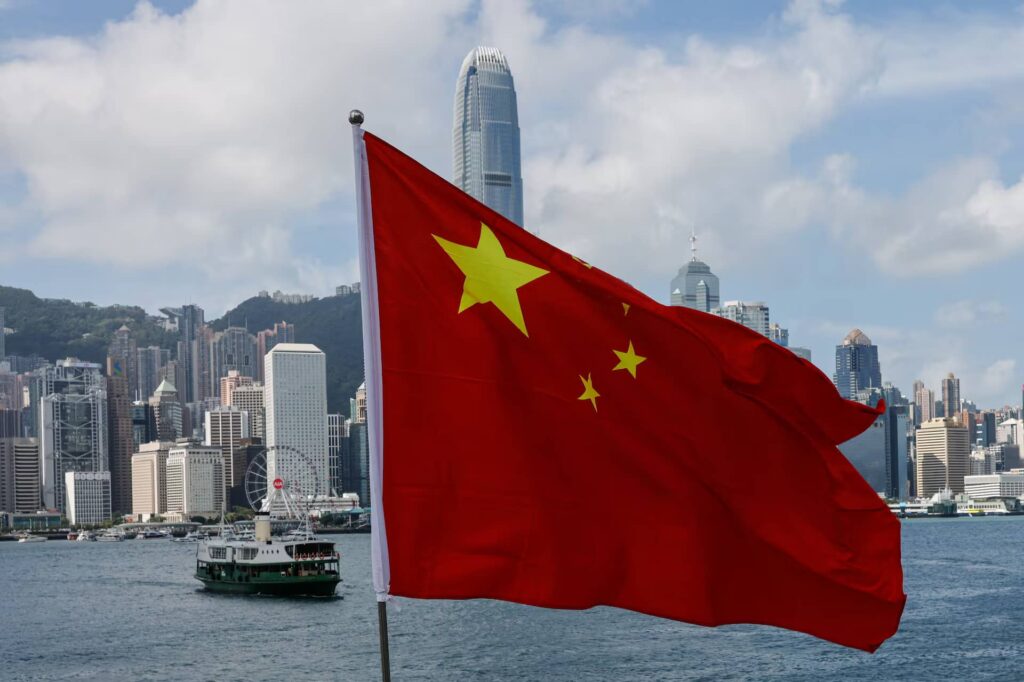In a move that has raised international concerns, China began a new round of military drills near Taiwan on October 14, 2024, intensifying its efforts to assert dominance over the self-ruled island. These exercises, seen as part of a broader strategy to coerce Taiwan into reunification with the mainland, are yet another chapter in the escalating standoff between China, Taiwan, and the Western powers watching the region closely.

Historical Context: The Roots of the China-Taiwan Conflict
The conflict between China and Taiwan traces back to the Chinese Civil War, which concluded in 1949 when the Communist Party, led by Mao Zedong, declared the People’s Republic of China (PRC) on the mainland. Meanwhile, the defeated Nationalist government retreated to Taiwan, where it established the Republic of China (ROC). Since then, Taiwan has functioned as a separate entity with its own government, military, and economy.
However, China considers Taiwan a breakaway province, part of its sovereign territory. Beijing has maintained that reunification must occur, and it has not ruled out using military force to achieve this. Taiwan, on the other hand, continues to operate as a de facto independent nation, with growing calls for formal independence in recent years—a notion Beijing vehemently opposes.
China’s military exercises, particularly those around Taiwan, are intended to send a clear signal: any push for Taiwanese independence will be met with overwhelming military force.
A Show of Force: Details of the Military Exercises
The drills began on October 14, 2024, and are part of the “Joint Sword-2024B” exercises. These maneuvers involve naval, air, and missile forces operating in the waters to the north, south, and east of Taiwan. The People’s Liberation Army (PLA) described the exercises as a response to “separatist forces” pushing for Taiwanese independence, and they aim to test joint operations capabilities, including sea-air combat readiness, blockading key ports, and attacking maritime and ground targets
The latest exercises, according to China’s Ministry of Defense, involved a mix of naval, air force, and missile units, simulating operations designed to isolate and seize control of Taiwan. Warships patrolled the Taiwan Strait, which separates the island from the mainland, while fighter jets and bombers flew sorties over the waters surrounding the island. Ground-based missile units practiced targeting offshore sites, aiming to demonstrate China’s capability to launch an effective offensive in the event of conflict.
The drills followed Taiwan’s National Day celebrations and statements made by President Lai Ching-te, who vowed to “resist annexation” and maintain Taiwan’s autonomy. Lai’s refusal to recognize Beijing’s claim over Taiwan has further intensified tensions, and China’s war games are seen as a warning in the lead-up to Taiwan’s upcoming presidential elections, where independence remains a sensitive issue
In recent years, China has ramped up its military presence in the Taiwan Strait and surrounding areas. Its military capabilities have grown exponentially, with modernized naval fleets, advanced air defense systems, and missile technologies designed to neutralize any potential interference by Taiwan’s allies, including the United States.
Strategic Messaging and U.S. Influence
Washington’s involvement, both in terms of arms sales and political support, is a major factor driving China’s frequent military drills. In recent months, U.S. arms deals, including the sale of advanced F-16 fighter jets and missile defense systems, have bolstered Taiwan’s defenses, much to China’s frustration. China views this assistance as an interference in its internal affairs, further escalating tensions in the region.
Beijing’s military exercises are also designed to serve as a message to the United States: stay out of China’s internal matters, or face the consequences. By conducting these large-scale operations, China is reminding the U.S. and its allies that it has the capability to control the region militarily, and that foreign intervention would be costly.
Taiwan’s Response: Strengthening Defenses and Diplomatic Outreach
In the face of China’s saber-rattling, Taiwan has not stood idly by. The Taiwanese government condemned the exercises as an attempt to intimidate its people and undermine its democratic institutions. President Lai Ching-Te has reiterated that Taiwan will not be coerced into unification with China, reaffirming the stance that the island’s future must be decided by its people, not Beijing.
On the defense front, Taiwan has accelerated its military modernization programs, focusing on asymmetrical warfare strategies. The island nation, aware of China’s overwhelming numerical superiority, has invested in advanced missile systems, unmanned drones, and rapid-response capabilities designed to inflict heavy damage on Chinese forces in the event of an invasion. Taiwan’s military has also conducted its own exercises, simulating defensive scenarios aimed at repelling a potential Chinese attack.
Moreover, Taiwan continues to seek international support, particularly from the United States, Japan, and European nations. President Lai Ching-Te’s administration has worked to cultivate alliances with democracies, emphasizing the importance of Taiwan as a bastion of freedom in the face of authoritarianism.
International Reactions: A Growing Geopolitical Flashpoint
The international community has expressed growing concern over China’s increased militarization of the Taiwan Strait. The United States, in particular, has warned China against taking any unilateral actions that could destabilize the region. The Pentagon has routinely dispatched warships and aircraft to the area to monitor Chinese activity and demonstrate Washington’s commitment to the region’s security.
Japan, whose islands lie close to Taiwan, has also voiced concerns. Tokyo has increased its defense spending and military cooperation with both Taiwan and the U.S. in response to China’s growing assertiveness. In recent years, Japan’s defense planners have made it clear that a conflict over Taiwan would directly impact Japan’s national security.
Australia, another key U.S. ally in the Indo-Pacific, has similarly reinforced its military ties with Taiwan. Canberra has expressed strong support for maintaining the status quo in the Taiwan Strait, warning China against any moves to alter the region’s balance of power through force.
Meanwhile, Southeast Asian nations, many of which rely heavily on trade routes passing through the Taiwan Strait, are closely watching the situation. A military conflict in the region would disrupt global trade, further straining an already fragile global economy.
The Road Ahead: A Delicate Balance
As China continues its military buildup and Taiwan prepares for its upcoming elections, the prospect of a peaceful resolution seems increasingly distant. Beijing is unlikely to back down from its reunification goals, while Taiwan’s government, backed by a population that largely opposes unification under China’s terms, shows no signs of yielding.
The situation places the United States and its allies in a precarious position. Any direct military support for Taiwan risks a confrontation with China, a nuclear-armed superpower. Yet, failing to support Taiwan could embolden Beijing and destabilize the broader Indo-Pacific region.
As the world watches these developments unfold, one thing remains clear: the Taiwan Strait is fast becoming one of the most dangerous flashpoints in global geopolitics.
Frequently Asked Questions
Q1. Why is China conducting military exercises near Taiwan?
A1.China conducts these drills to assert its claim over Taiwan, warn against independence, and demonstrate its military capabilities. They are also a response to perceived foreign interference, especially from the U.S.
Q2. What are the potential consequences of these drills?
A2.The exercises heighten the risk of miscalculations that could lead to conflict. They also disrupt regional stability and raise concerns among Taiwan’s allies, including the U.S. and Japan.
Q3. How has Taiwan responded?
A3.Taiwan has condemned the drills and strengthened its military defenses. The government continues to seek support from the international community while preparing for potential scenarios of conflict.
Q4. What is the U.S. stance on the Taiwan issue?
A4.The U.S. supports Taiwan’s defense through arms sales and military cooperation but maintains a policy of strategic ambiguity, meaning it has not explicitly stated whether it would directly intervene in a conflict with China over Taiwan.
Q5. Could these tensions lead to a full-scale war?
A5.While a full-scale war remains a worst-case scenario, the rising tensions and military activities increase the likelihood of an accidental escalation, which could draw in global powers.
Reference : http://www.britannica.com





